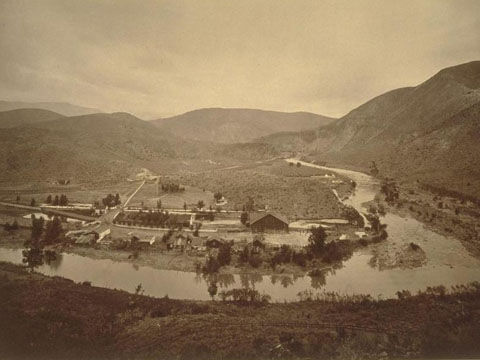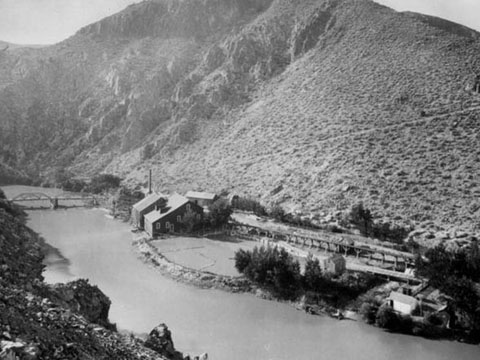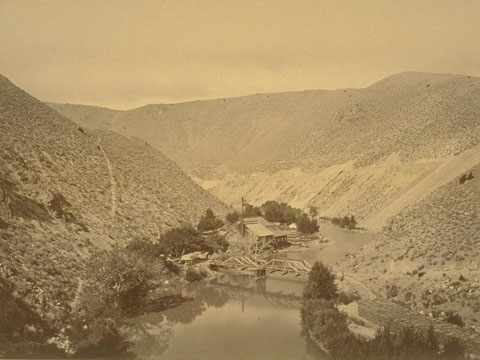Carson River Canyon Mills
From 1860 until 1878, while the Comstock Lode was active, the Carson River Canyon was alive with the noise of ore reduction. Several mills and arrastras were in operation, using the plentiful water of the Carson River for power.
It all began in 1859 when the first ore was shipped from the Ophir mine and the Mexican mine. Since there were no local mills at the time, ore had to be freighted over the Sierra Nevada mountains to California. That changed in 1860 when the first stamp mill, the Silver State or Mexican, was erected in Empire City. From that point, the Carson River Canyon became a hotspot for activity as several other mills were constructed. Mule-driven wagons flowed almost constantly from the Comstock mines to the mills until 1869, when they were largely replaced by the newly constructed Virginia and Truckee Railroad. In 1871, many of the mills were enlarged for the increased output from the mines until 1875. After 1878, production slowed down and the mills began to close.
Six of the large mills in the canyon were served by the V&T. From west to east, they were the Morgan, Brunswick, Merrimac, Blue Canyon, Vivian, and Santiago. Below, we're going to follow the original V&T grade most of the way through the canyon.
















